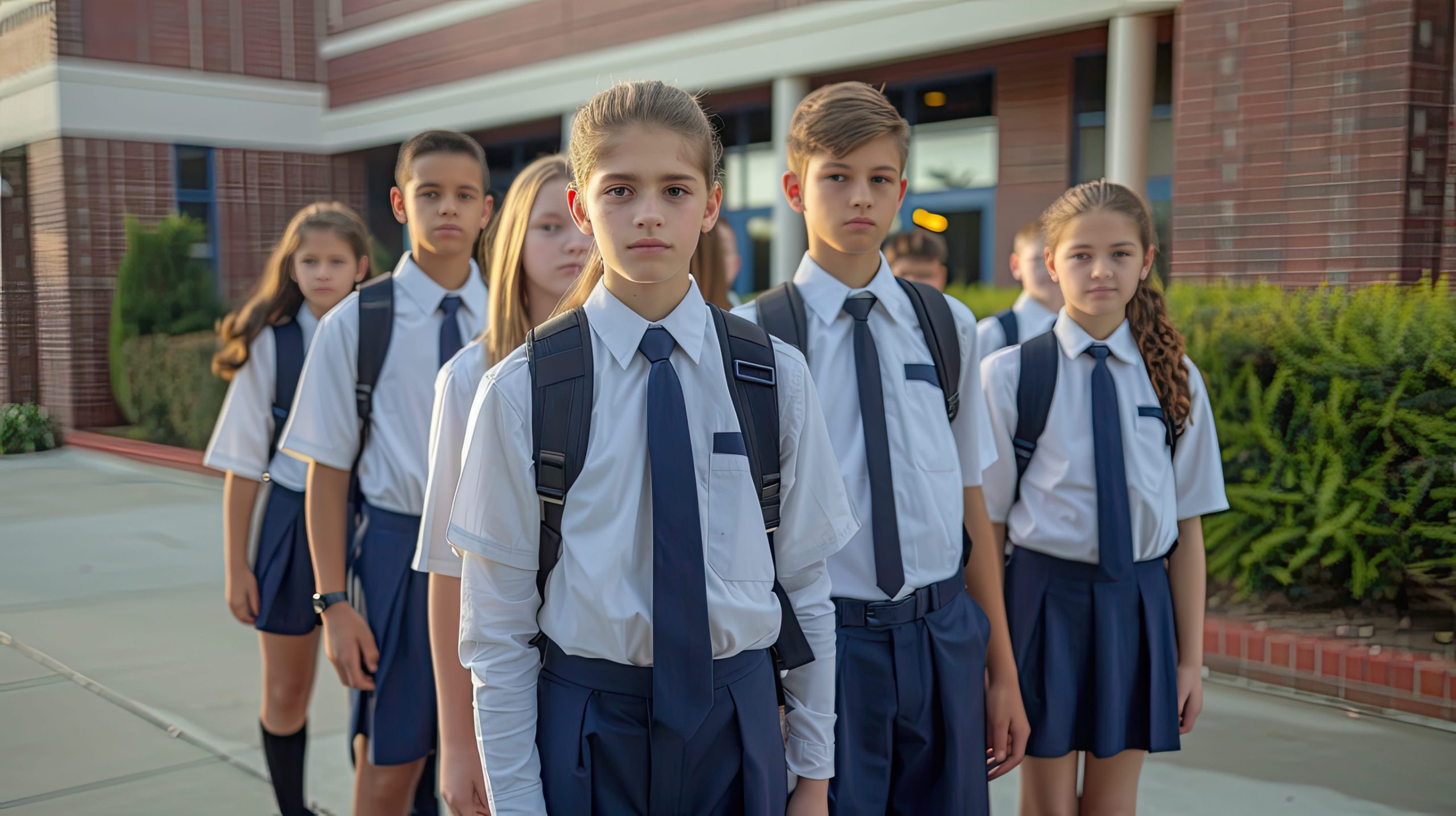Public schools promise to prepare young people for the “real world,” but sometimes the rules inside those hallways look more like a dystopian plot twist than a civics lesson. From restricting self-expression to searching through lockers like they’re bank vaults, schools often push the line on what’s actually legal—or fair.
While teachers and administrators claim it’s all about safety and order, plenty of policies have quietly stomped over students’ constitutional rights for decades. Many students and parents don’t realize just how far some schools are willing to go to keep control. These are the rules that still show up in handbooks every year, whether they belong there or not.
1. Dress Codes That Discriminate
Dress codes exist to keep kids looking “appropriate,” but too often they do more harm than good. Across the country, vague policies end up policing girls’ bodies and cultural identity instead of ensuring an equal environment. From banning hairstyles like dreadlocks and afros to targeting skirt lengths, these codes disproportionately single out Black and female students. Courts have repeatedly ruled that such biased dress codes can cross the line into discrimination. Despite this, many schools still suspend or humiliate students over what they wear.
2. Random Locker Searches
The locker may be school property, but what’s inside often belongs to the student—and the Fourth Amendment is supposed to protect against unreasonable searches. Many schools, however, claim the right to poke around whenever they feel like it, no warrant needed. Students can find themselves in trouble for items that have nothing to do with safety, like snacks or personal notes. While courts generally allow some locker inspections, blanket searches without cause can violate students’ privacy rights. Still, countless schools hold surprise sweeps every semester.
3. Bans on Political Expression
Some schools still cling to the idea that students should “leave politics at the door,” even though the Supreme Court famously ruled otherwise decades ago. The landmark Tinker v. Des Moines case established that students don’t lose their First Amendment rights at the schoolhouse gate. Yet today, kids wearing shirts with political slogans or organizing peaceful protests risk suspension or forced cover-ups. Administrators often claim such displays are “disruptive” even when there’s no evidence. Silencing student voices remains a common tactic to avoid controversy.
4. Zero-Tolerance Policies for Minor Infractions
Zero-tolerance rules sound tough but often punish harmless behavior with severe consequences. Bringing a butter knife in a lunchbox or accidentally leaving a pocket tool in a backpack can mean expulsion under strict “weapons” definitions. These policies remove context and intention, treating innocent mistakes the same as real threats. The Supreme Court has warned against excessive punishments that violate due process, yet harsh zero-tolerance laws persist. Too many students pay with their futures for a harmless oversight.
5. Restrictions on LGBTQ+ Identity
Schools that ban students from expressing their gender identity or sexual orientation tread on shaky legal ground. For decades, LGBTQ+ students have faced punishments for simply wearing pride pins, using preferred pronouns, or bringing same-sex dates to dances. Federal courts have upheld students’ rights to express their identity under the First Amendment and Title IX. Yet in many districts, outdated rules or unsupportive administrators keep punishing kids for who they are. Discrimination masquerading as “morality” still thrives in too many hallways.
6. Mandatory Drug Testing Without Suspicion
Random drug testing policies have sparked fierce debate in schools across the United States. While student athletes can legally be tested under certain circumstances, some schools extend this to any extracurricular activity—or even all students. Testing kids without any reason or suspicion can violate Fourth Amendment protections. Courts have struck down broad testing programs that go too far, but the practice remains common in many places. Students often comply because they fear being kicked off teams or banned from clubs.
7. Limiting Religious Expression
Religious freedom applies to students, too—so long as their activities don’t disrupt class or force others to participate. Yet some schools still forbid students from praying during breaks, wearing religious symbols, or forming faith-based clubs. These bans can breach the First Amendment’s guarantee of free exercise of religion. The courts have repeatedly ruled that students have the right to express their faith within reasonable limits. Still, the fear of “violating separation of church and state” often drives schools to overreach.
8. Gag Orders on Speaking Out
Some schools use so-called “gag orders” to prevent students from talking to the media or posting online about certain issues. Administrators may threaten punishment for social media posts criticizing school policies or sharing details about internal problems. This heavy-handed censorship runs directly into First Amendment rights to free speech. Courts have protected students’ right to discuss non-disruptive matters even outside school hours. But fear and intimidation keep many students quiet when they should be heard.
Know the Rules—And Your Rights
School is supposed to be a place for learning and growth, but not every rule deserves a gold star. When policies overstep, they don’t just stifle student voices—they can break the law. Knowing these common rights violations is the first step to challenging unfair treatment. Students and parents who speak up help protect freedom for everyone who passes through those double doors. What school rules have you seen that cross the line? Share your thoughts in the comments below.
Read More
7 Of The Most Outrageous Things Students Have Spent Their Student Loan Money On
6 Things Still Taught in Schools That Are Scientifically Wrong


